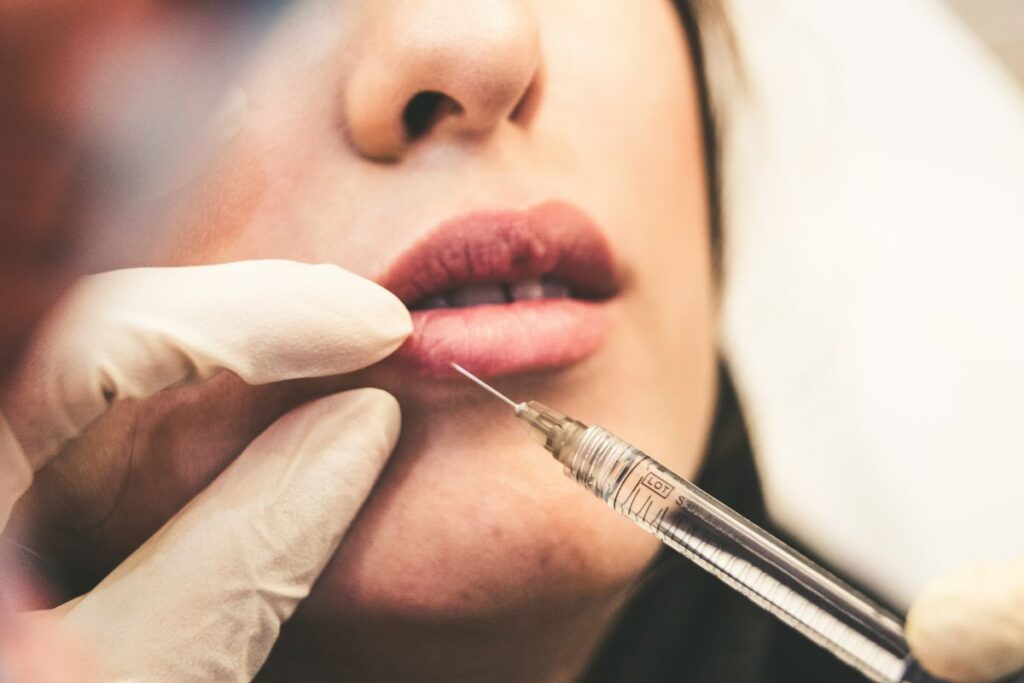Have you ever looked in the mirror and noticed those fine lines creeping up? Or maybe your cheeks aren’t as full as they used to be?
Dermal fillers might be the solution you’re searching for. Let’s dive into what dermal fillers are, how they work, and why they’re so popular.
What Are Dermal Fillers?
Dermal fillers are gel-like substances injected beneath the skin. They add volume and smooth lines and enhance facial contours. Made from various substances, these fillers may be used for various cosmetic improvements.

Types of Dermal Fillers
- Hyaluronic Acid (HA) Fillers: HA is found naturally in the body. The fillers hydrate the skin and add volume. They are ideal for smoothing wrinkles, plumping thin lips, and restoring volume to cheeks.
- Calcium Hydroxylapatite: A mineral-like compound found in human bones. It’s used for deeper wrinkles and volume loss. Great for nasolabial folds and recessed scars.
- Poly-L-lactic Acid: This type of filler stimulates your own collagen production. It’s used for facial wrinkles and deeper lines. Results are gradual but long-lasting.
- Polymethyl Methacrylate Microspheres (PMMA): PMMA is a semi-permanent filler that adds volume and smooths wrinkles. It is often used for deeper wrinkles and recessed scars.
Benefits of Dermal Fillers
Immediate Results

Unlike some cosmetic procedures, the effects of dermal fillers are visible almost immediately. You walk out of the clinic looking refreshed and youthful.
Minimal Downtime
Dermal filler procedures are quick and often completed within 30 minutes. There’s minimal downtime, so you can get back to your daily activities right away.
Versatility
Fillers can address various cosmetic concerns. From smoothing facial wrinkles to adding volume to cheeks and lips, the versatility of fillers makes them a popular choice.
The Procedure
Consultation


A consultation with a board-certified dermatologist or cosmetic surgeon is the first step. Discuss your goals, medical conditions, and possible risks.
Preparation
The treatment area will be cleaned, and a numbing cream might be applied to ease pain. Some fillers contain lidocaine, which further reduces discomfort.
Injection
The medical professional will inject dermal fillers into the targeted areas. Multiple injection sites may be needed for optimal results.
Aftercare
Minor swelling or bruising may occur after the procedure. Most side effects are temporary and subside within a few days. To minimize adverse events, follow the aftercare instructions provided by your practitioner.
Common Uses of Dermal Fillers
Smoothing Wrinkles
Dermal fillers are effective for treating facial wrinkles and lines. Fillers may soften crow’s feet, smile lines, and frown lines.
Adding Volume
Fillers restore volume loss in areas like the cheeks and under the eyes. They may also plump thin lips, giving you a fuller, more youthful appearance.
Enhancing Facial Contours
Enhance your natural beauty by defining your jawline, chin, and cheekbones with fillers. They provide subtle yet significant improvements to your facial structure.
Possible Risks and Side Effects
Every cosmetic procedure has risks. The most common side effects of dermal fillers include swelling, bruising, and redness at the injection site. Rarely, allergic reactions or vision problems may occur. Choosing a qualified and experienced practitioner reduces these risks.
Choosing the Right Filler
Consultation with a Professional
Consult with a medical professional to determine the right type of filler for your needs. Factors like skin type, desired results, and potential allergies will influence this decision.
Consider Longevity
Different fillers last for varying durations. Hyaluronic acid fillers typically last 6 to 18 months, while semi-permanent fillers like PMMA may last several years. Discuss the longevity of each option with your doctor.
Budget
Fillers can be an investment. The cost varies based on the type of filler and the area being treated. Some may find buying dermal fillers in packages beneficial for a better deal.
Conclusion
Dermal fillers offer a safe and effective way to combat signs of aging. They add volume and smooth lines and enhance facial contours, providing immediate and noticeable results. With minimal downtime and a range of options, it’s no wonder more people are choosing to inject dermal fillers.
Remember, always consult with a board-certified dermatologist or cosmetic surgeon. Their expertise ensures the best results and reduces potential risks. Embrace the opportunity to restore your youthful appearance with confidence.
Frequently Asked Questions

What are dermal fillers made of?
Soft tissue fillers contain various substances, including hyaluronic acid, calcium hydroxylapatite, and poly-L-lactic acid.
How long does a dermal filler procedure take?
A typical dermal filler procedure usually takes 15 to 30 minutes, depending on the treatment area.
Are dermal fillers a type of plastic surgery?
Dermal fillers are a non-surgical alternative to plastic surgery, offering facial enhancement without invasive procedures.
Can dermal fillers affect facial muscles?
Injectable fillers are designed to add volume and smooth wrinkles without altering facial muscles.
Can I combine dermal fillers with Botox and other treatments?
Yes, dermal fillers can be combined with Botox and other treatments for a more comprehensive facial rejuvenation.
Images courtesy of unsplash.com and pexels.com












